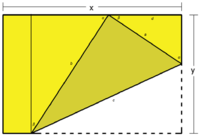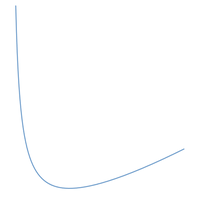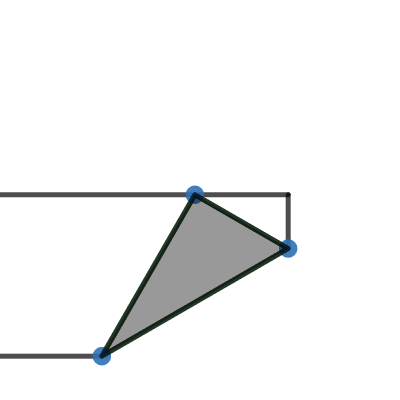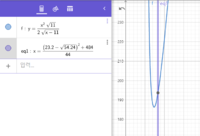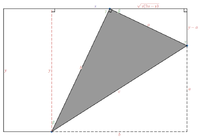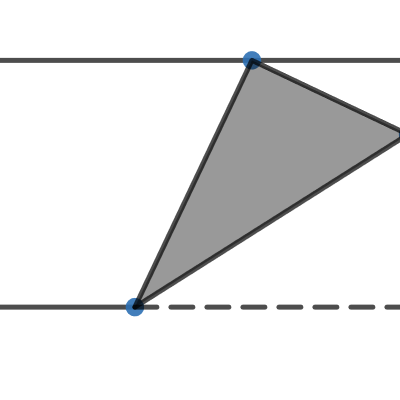There is a rectangular piece of paper with a length of 23.2 cm and height of 22 cm. The lower right corner is folded to the top edge forming a triangle. Find the minimum area of a triangle that can be constructed.
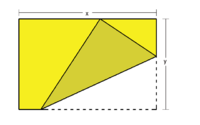
At first, I found the relationship between the base and height of the triangle, and then I differentiated the area, and then the result can be shown here, as a graph.
 www.wolframalpha.com
www.wolframalpha.com
and then this wasn't the answer, so, I thought that the edge of the triangle could perfectly meet with the edge of the rectangle and found another answer.
but this was also incorrect.
And this problem specifically mentions that a 'triangle' must be constructed, so my attempts to find a square failed, too.
I am very lost, and could you please tell me how to get back on track?

At first, I found the relationship between the base and height of the triangle, and then I differentiated the area, and then the result can be shown here, as a graph.
(x^2/2)sqrt{11/(x-11)} - Wolfram|Alpha
Wolfram|Alpha brings expert-level knowledge and capabilities to the broadest possible range of people—spanning all professions and education levels.
and then this wasn't the answer, so, I thought that the edge of the triangle could perfectly meet with the edge of the rectangle and found another answer.
but this was also incorrect.
And this problem specifically mentions that a 'triangle' must be constructed, so my attempts to find a square failed, too.
I am very lost, and could you please tell me how to get back on track?

